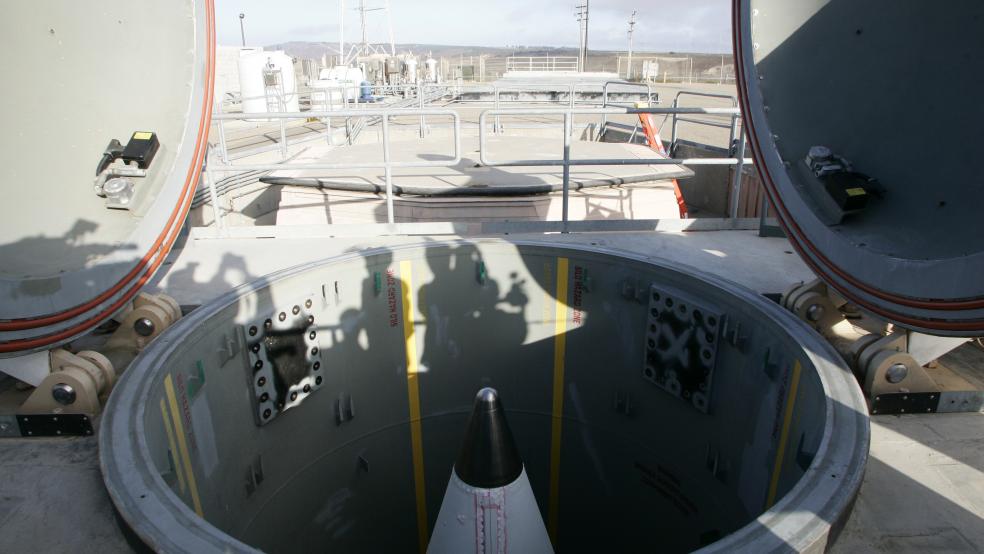In order to maintain a stockpile of aging nuclear weapons and their delivery systems, the U.S. government will need to spend an average of $40 billion per year over the next decade, according to a report from the Congressional Budget Office.
The report, a biennial review last completed in 2015, finds that “The nation’s current nuclear forces are reaching the end of their service life ... Over the next two decades, essentially all of those nuclear delivery systems and weapons would have to be refurbished or replaced with new systems to continue operating. Consequently, the Congress will need to make decisions about what nuclear forces the United States should field in the future and thus about the extent to which the nation will pursue nuclear modernization plans.”
Related: 4-Star General Warns of ‘Unbelievable Turmoil’ in Trump’s White House
The United States currently has about 6,800 nuclear warheads, about 2,800 of which have been retired and are waiting to be broken down, according to the Arms Control Association. A little over 4,000 warheads are stockpiled, meaning that they are available for use but not currently deployed. The U.S. has 1,367 warheads deployed on various delivery vehicles, including intercontinental ballistic missiles, nuclear-capable bombers, and submarines.
The 10-year cost of maintaining the nuclear arsenal jumped by 15 percent over the last estimate, a rate of growth that CBO warns is likely to increase as the average age of the weapons in it increases.
The 10-year spending breakdown is as follows:
* $189 billion for “strategic nuclear delivery systems and weapons.” This includes missiles, long-range bombers and submarines.
* $9 billion for tactical nuclear delivery systems and weapons. These include airplanes armed with shorter-range, lower-yield weapons.
* $87 billion for the Department of Energy’s nuclear weapons laboratories
* $58 billion for the Department of Defense’s “command, control, communications, and early-warning systems.”
None of this takes into account the possibility that President Trump might press for an expansion of the arsenal, which has been slowly shrinking in recent decades due to arms control agreements.
Related: National Insecurity: Intel Officials Increasingly Worried About Trump
During the presidential debates, Trump claimed that “Russia has been expanding” its nuclear arsenal and has “a much newer capability than we do.” Arms control experts challenged his assessment of the Russian stockpile, but Trump was apparently undeterred.
In December, after his election but before he was sworn in as president, Trump tweeted that “United States must greatly strengthen and expand its nuclear capability until such time as the world comes to its senses regarding nukes."
The news on Tuesday that Russia has deployed new nuclear missiles, which U.S. officials claim are in violation of a 30-year-old treaty governing medium-range missiles, may weigh on the new administration’s decision-making when it comes to the maintenance and potential expansion of the U.S. arsenal.





